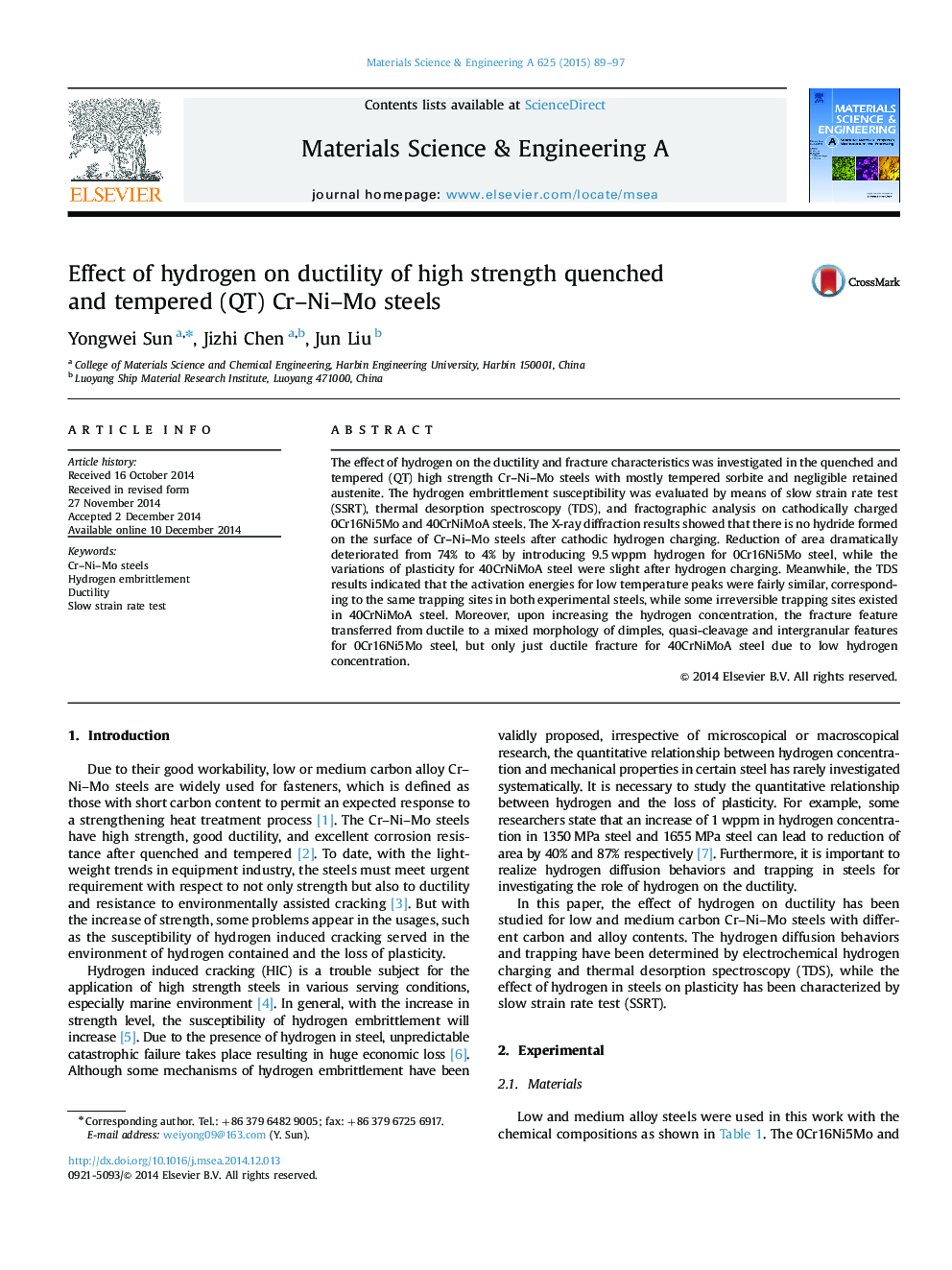| Article ID | Journal | Published Year | Pages | File Type |
|---|---|---|---|---|
| 7978982 | Materials Science and Engineering: A | 2015 | 9 Pages |
Abstract
The effect of hydrogen on the ductility and fracture characteristics was investigated in the quenched and tempered (QT) high strength Cr-Ni-Mo steels with mostly tempered sorbite and negligible retained austenite. The hydrogen embrittlement susceptibility was evaluated by means of slow strain rate test (SSRT), thermal desorption spectroscopy (TDS), and fractographic analysis on cathodically charged 0Cr16Ni5Mo and 40CrNiMoA steels. The X-ray diffraction results showed that there is no hydride formed on the surface of Cr-Ni-Mo steels after cathodic hydrogen charging. Reduction of area dramatically deteriorated from 74% to 4% by introducing 9.5Â wppm hydrogen for 0Cr16Ni5Mo steel, while the variations of plasticity for 40CrNiMoA steel were slight after hydrogen charging. Meanwhile, the TDS results indicated that the activation energies for low temperature peaks were fairly similar, corresponding to the same trapping sites in both experimental steels, while some irreversible trapping sites existed in 40CrNiMoA steel. Moreover, upon increasing the hydrogen concentration, the fracture feature transferred from ductile to a mixed morphology of dimples, quasi-cleavage and intergranular features for 0Cr16Ni5Mo steel, but only just ductile fracture for 40CrNiMoA steel due to low hydrogen concentration.
Related Topics
Physical Sciences and Engineering
Materials Science
Materials Science (General)
Authors
Yongwei Sun, Jizhi Chen, Jun Liu,
